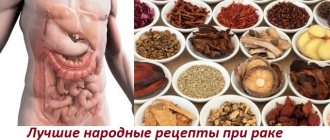Discomfort in the epigastric region is familiar to everyone - nausea, which is a manifestation of symptoms that do not always indicate digestive problems.
Factors contributing to its occurrence may be psychological in nature or be a consequence of a post-traumatic state.
Negative effects on the human body provoke changes in its functioning, which are aimed at enhancing protective properties.
These include a reduction in energy costs to digest food. As a result, a person feels that the body is ready to get rid of food masses in the near future.
Therefore, nausea is the body’s reaction to changed external conditions or human health problems . It is localized just below the solar plexus area, and there is a feeling of a full stomach.
Increased heart rate, slow breathing, pale skin, and sweating are accompanying signs of nausea.
Symptoms
In most cases, the feeling of nausea is accompanied by a number of additional symptoms. As a rule, these include general weakness, increased salivation, dizziness and pale skin. Vomiting is of particular importance in terms of diagnosis. Nausea can be caused by various diseases in which the digestive tract is not always involved. An example is migraine. With this pathology, severe unilateral pain occurs in the head area. It is not uncommon for patients to experience nausea and vomiting during the development of such attacks. If the cause of the disease is related to the functioning of the digestive tract, then vomiting, as a rule, brings relief, but if not, then the problems are related to the nervous system.
The nature of vomiting can suggest the presence of one or another pathology. If the vomit resembles coffee grounds, this indicates bleeding from the upper digestive tract. This condition is caused by gastric ulcer, bleeding from esophageal varices and Mallory-Weiss syndrome. Yellow vomit indicates gastroduodenal reflux.
It is also necessary to mention a condition such as pyloric stenosis. With this pathology, the outlet of the stomach narrows, and food cannot pass further into the underlying parts of the digestive tract. Pyloric stenosis is accompanied by nausea and vomiting, which brings relief. In the initial stages of the disease, the state of health of such patients is generally satisfactory. Over time, with decompensation of the general condition, the lumen is completely blocked, food is not digested, and the stomach increases in size. The general appearance of such patients is emaciated, and there is a violation of water and electrolyte balance. The vomit has an unpleasant odor and contains food debris.
Common causes of nausea in women
If you do not take into account a condition such as pregnancy, then the most likely causes of discomfort include:
- overeating fried, fatty foods;
- hunger, disruptions in diet;
- strong fears, stress, worries, anxiety;
- abuse of certain medications;
- constant unpleasant odors;
- overheating in the sun, prolonged exposure to a stuffy room;
- motion sickness;
- menstruation;
- excessive physical activity, too intense sports;
- lack of adequate sleep.
Causes
There are several pathological reasons that cause such an unpleasant symptom as a feeling of nausea after eating. They are mainly associated with diseases of the upper gastrointestinal tract. This includes gastric ulcers, biliary tract dysfunction, infectious diseases, as well as a number of other pathologies that disrupt the functioning of the digestive system. In many cases, gastroenterological diseases are caused by incorrect eating habits and an unbalanced diet. Excessive consumption of acidic and fatty foods puts a lot of stress on the digestive tract. In addition, infection, congenital pathology, or mechanical damage to the organ wall can contribute to the development of diseases. The most common diseases that cause nausea after eating:
- Peptic ulcer of the stomach and duodenum;
- Pathology of the biliary system;
- Pancreatitis;
- Intestinal infection;
- Hormonal imbalances.
Of the emergency conditions, it is necessary to mention the most common ones. An attack of acute appendicitis is characterized by the appearance of intense pain in the right iliac region. Due to the specific innervation of the abdominal organs, pain may first be felt in the epigastrium and then migrate to a more familiar area. Acute pancreatitis is expressed in the form of severe pain that has a girdling character. The pain syndrome can be so intense that people develop a state of shock. Both diseases typically present with nausea and vomiting. If such symptoms appear, you must immediately call an ambulance.
GERD
Particular attention should be paid to such a disease as gastroesophageal reflux disease (GERD). Once food enters the oral cavity, it must be carefully digested and pass further through the pharynx into the esophagus and then into the stomach. The border between the last two organs is the cardiac sphincter of the stomach. The sphincter is a special structure, which is a muscular ring that opens to move food into the underlying sections, and then closes to prevent reverse reflux. In some people, during life, this ring weakens and ceases to perform its functions. As a result, the contents of the stomach, including semi-digested food, enzymes and hydrochloric acid, are thrown into the esophagus. Subjectively, the patient feels heartburn, nausea and sour belching. In advanced cases, reflux is accompanied by vomiting. If you feel sick after every meal, you need to make an appointment with a specialist.
Infection
One of the most typical symptoms of an intestinal infection is a feeling of nausea after eating. When pathological microorganisms enter the gastrointestinal tract, intoxication develops, manifested in the form of general malaise, nausea, vomiting, diarrhea and indigestion. Pathogenic bacteria take root on the mucous membrane of the intestinal tract and, during their life activity, release a huge amount of toxins. The body responds by activating its own defense processes aimed at removing toxins from the digestive tract. By reducing the absorption of fluid from the intestines, it is possible to achieve better removal of toxins, but, unfortunately, this manifests itself in the form of unpleasant symptoms.
Cholecystitis
If a person regularly feels nauseous after eating, this may be due to a pathology of the biliary system. Bile is a very important liver secretion that emulsifies fats and stimulates the intestines for further digestion. Bile is synthesized by the liver but stored in the gallbladder. When food enters the duodenum, bile flows through special ducts and enters the lumen of the digestive tract, where it actually performs its main function. In a number of diseases caused by a violation of the production and secretion of bile, a symptom such as nausea after eating may occur.
One of these pathologies is inflammation of the gallbladder wall. It can occur in many situations, but generally the disease is associated with either mechanical or infectious damage. Mechanical damage is caused by the formation of gallstones that injure the walls of the organ.
Gallstones
Bile consists of a number of components (cholesterol, bilirubin, bile acids, etc.). With the development of inflammatory changes in the wall of the bladder, as well as due to poor nutrition, an imbalance of bile components occurs, which leads to the formation of stones. In addition to nausea, this condition is accompanied by pain in the right iliac region. The pain syndrome can occur as a biliary colic; it has a clear localization and, as a rule, goes away after taking antispasmodics. As a rule, people suffering from cholecystitis feel sick from eating fatty foods.
Children
If a child experiences nausea after eating, this is not yet a reason to hospitalize him with intestinal poisoning. Many children may develop this symptom due to increased emotionality. To eliminate negative reactions, you need to let the child breathe into a paper bag. By inhaling small concentrations of carbon dioxide, you can slightly slow down the exciting reactions and prevent the child from developing a nervous breakdown.
If a child constantly feels sick after a certain meal, then this indicates an allergic reaction to certain foods. Hypersensitivity reactions can manifest in different ways. Some develop a rash, some experience swelling, and some children develop nausea, vomiting and diarrhea. To confirm the allergic origin of the disease, you must consult an allergist.
What causes
Nature arranges it in such a way that a disruption in the functioning of organs is manifested by characteristic symptoms. A defensive reaction (nausea, vomiting) suggests that the body is exhausted by stress, blood pressure has increased and it’s time to get rid of the growing tension. However, most often a person suffers from excess or poisoned food. The eruption of undigested foods as a result of a powerful stomach spasm occurs suddenly or with preliminary nausea.
Causes of vomiting after eating
The following factors can cause a painful condition:
- Excessive food consumption. A child or adult does not know how to eat in moderation, taking long breaks between meals. Excessive volumes of food pickles put pressure on the abdominal wall, provoking vomiting from overeating.
- Weak vestibular apparatus. A person has a tendency to seasickness, motion sickness in transport - he feels nauseous and often vomits from the monotonous vibrations of the body. Children may experience similar sensations on carousels.
- Pregnancy. The female body perceives the fetus as a foreign body, a phenomenon called toxicosis is proof of this.
- Side effects of drugs. Medications often cause nausea and vomiting when taken orally after meals.
- Myocardial infarction. A situation where a sick person is accompanied by a nauseating feeling and vomiting after finishing eating. Constant nausea can occur even if a person does not eat anything.
- Concussion, head injuries. In addition to vomiting, symptoms of problems with blood supply to the brain include headache, lethargy, and dizziness.
- Nervous stress. Suffered shock, severe worry or anxiety weakens the immune system and concentrates tension in the epigastric region. A defense mechanism is triggered in the form of gagging.
Causes of vomiting after eating
The following factors can cause a painful condition:
- Excessive food consumption. A child or adult does not know how to eat in moderation, taking long breaks between meals. Excessive volumes of food pickles put pressure on the abdominal wall, provoking vomiting from overeating.
- Pregnancy. The female body perceives the fetus as a foreign body, a phenomenon called toxicosis is proof of this.
- Side effects of drugs. Medications often cause nausea and vomiting when taken orally after meals.
- Myocardial infarction. A situation where a sick person is accompanied by a nauseating feeling and vomiting after finishing eating. Constant nausea can occur even if a person does not eat anything.
- Concussion, head injuries. In addition to vomiting, symptoms of problems with blood supply to the brain include headache, lethargy, and dizziness.
- Nervous stress. Suffered shock, severe worry or anxiety weakens the immune system and concentrates tension in the epigastric region. A defense mechanism is triggered in the form of gagging.
- Alcohol poisoning. Occurs when taking alcohol-containing drinks that provoke intoxication.
- Poisoning with food, chemical elements, toxic substances. They manifest as a nauseating reaction an hour after eating, vomiting one or more times, and weakness.
Weak vestibular apparatus. A person has a tendency to seasickness, motion sickness in transport - he feels nauseous and often vomits from the monotonous vibrations of the body. Children may experience similar sensations on carousels.
Gastrointestinal diseases
Vomiting is often a sign of a disease of the gastrointestinal tract or endocrine system. Disturbances in the production of thyroid hormones stimulate the nerve centers that regulate the processes of nausea and vomiting. Lack of microelements and vitamins provokes dizziness and disruption of body functions.
What pathologies of internal organs during digestion of food cause vomiting:
- Peptic ulcer, acute gastritis. The painful condition is accompanied by nausea, the stomach turns out repeatedly after eating.
- Inflammation of the appendix. Acute appendicitis is accompanied by diarrhea, vomiting, unbearable pain in the right iliac region after finishing food intake, and in between meals. An increase in temperature is observed.
- Inflammation of the gallbladder, pancreas (pancreatitis). Diseases occur in acute or chronic phase. After each meal, a person feels bitterness in the mouth, dyspepsia and cramping in the stomach. You may also vomit during meals.
Other reasons
Rejection of food by the body occurs as a result of viruses, bacteria, and pathological microflora entering the mucous membranes. Doctors call the eruption of stomach contents and uncontrollable diarrhea a striking manifestation of intestinal flu. Rotavirus infection depletes the body within a day; the stomach does not accept food and water until the acute phase of infection disappears.
The obsessive thought of being slim and attractive in appearance often turns into a dangerous addiction. Vomiting after eating is caused consciously. The danger of bondage leads to a mental disorder that is rarely curable. Ultimately leads to fatal consequences - the stomach is not able to accept and digest food.
Diagnostics
A full-fledged study consists of a number of laboratory and instrumental tests. Thanks to special biochemical tests, it is possible to confirm dysfunction in the biliary system. When conducting a biochemical blood test, the doctor determines the ratio of special compounds that indicate the level of liver performance. For example, an increase in the level of direct bilirubin speaks in favor of a violation of the outflow of bile.
Fibrogastroduodenoscopy (FGDS) plays a special role in the diagnosis of diseases of the upper digestive tract. This endoscopic examination method allows you to assess the condition of the mucous membranes of the esophagus, stomach and duodenum. To carry out the manipulation, the patient is placed on the couch in a lateral position. He is then allowed to swallow an endoscopic tube, which is advanced further down the esophagus. As a result, an image of the lumen of the patient’s digestive tract is displayed on the monitor screen. Thanks to FGDS, it is possible to confirm the reflux of stomach contents, gastritis, ulcers, Mallory-Weiss syndrome, bleeding from varicose veins and much more.
The principle of conducting FGDS
Duodenal intubation is also used with great success in diagnosing diseases of the biliary system. The essence of the technique is to collect the contents of the duodenum and then evaluate it in laboratory tests. Based on the quantity, color, and concentration of bile components, it is possible to confirm or refute a number of pathologies that can cause nausea after eating.
The principle of duodenal intubation
What to do?
If the patient has symptoms indicating the presence of an intestinal infection, it is recommended to consult a doctor as soon as possible. To confirm the diagnosis, studies will be carried out, on the basis of which antibacterial therapy is selected, aimed at eliminating the specific pathogen. If after diagnostic measures it is not possible to detect an organic cause for deterioration in well-being, then a diagnosis is made - functional dyspepsia. This condition is an exception diagnosis due to the absence of objective reasons for the feeling of nausea or discomfort in the stomach after eating.
The recommendations given in the text are not a guide to action. To obtain more detailed information about your disease, you should consult a doctor.
To treat functional dyspepsia, the doctor gives a number of recommendations:
- Avoid psycho-emotional stress;
- Carry out nutritional correction (reduce calorie portions, reduce the ratio of fat components);
- Reduce body weight;
- Fight physical inactivity.
If you always feel sick after eating, it is recommended to consult a gastroenterologist. Nausea is an uncomfortable feeling that is localized in the upper abdomen.
Often this symptom provokes vomiting, which emptys the stomach of its contents.
What does the color of vomit mean?
After eating or taking medications, if microbes are ingested, it is difficult to understand the cause of vomiting. The color scheme of the vomit contents will tell you about the probable diagnosis:
- The absence of any color (natural-looking vomit) indicates neurological disorders, stressful situations, or that the food intake was excessive.
- Blood spots indicate damage to the esophagus or stomach. The formation of polyps is acceptable.
- Green and yellow colors can occur due to intestinal infection or toxin poisoning.
- A black-brown tint indicates blood loss in the gastrointestinal tract. This is a warning sign.
An analysis of foods consumed by a person will tell you: if you eat beets, chocolate, or blueberries, the vomit is colored by the juice of the food. Vomit with blood requires an immediate call to the ambulance to avoid death.
Etiology of the manifested clinic
One-time and mild nausea after eating is a single feeling of different etiology that disappears on its own.
If regular and recurring nausea occurs, the patient has problems with the functionality of the digestive system:
- ulcer;
- cholecystitis;
- pancreatitis;
- infectious process;
- heart attack;
- migraine.
The somatic cause of nausea that occurs during or after eating requires urgent treatment. Before prescribing a treatment regimen, the gastroenterologist establishes the exact etiology of the development of this symptom.
Somatic reasons for feeling nauseated after eating include stomach dysfunction. With this diagnosis, additional symptoms appear:
- heartburn;
- pain in the epigastric region;
- belching.
The feeling of discomfort in question may appear immediately while eating. This indicates an inflammatory process occurring in the liver and gall bladder.
With this diagnosis, there is additionally severe pain on the right side of the abdomen, a feeling of bitterness in the mouth, and a distension in the stomach. Flatulence is another symptom that appears after eating.
If the appendix is inflamed, the patient may feel sick after any meal. Additionally, vomiting appears. With this diagnosis, abdominal pain is not often localized to the right.
It may be of an uncertain nature. But after some time, against the background of high temperature, the pain moves to the right epigastrium.
The causes of nausea after eating may be associated with pancreatitis. In this case, a typical pain appears that encircles the entire body.
If the pathology constantly manifests itself in a chronic form, there is no vomiting. With this diagnosis, the patient may complain of bloating.
If the reasons why you feel sick after every meal are associated with infection, the clinical picture in question begins to appear an hour after eating. The symptoms may intensify and vomiting may occur.
If the infection has penetrated the digestive tract, the patient experiences diarrhea, fever, and pain in the navel.
If you feel sick for an hour or the whole day, your doctor may diagnose myocardial infarction. In this case, urgent treatment is required.
Other reasons why you feel sick after eating are associated with various forms of kidney failure.
At an early stage of the disease, nausea appears suddenly, all the time, regardless of food intake. Kidney pathology additionally provokes shooting and aching pain in the lower back, chills.
The causes of nausea that occurs after eating are associated with various forms of hypertension. More often, the symptom in question bothers the patient in the morning. At the same time, the whole body swells, and dizziness is felt.
Hypothyroidism is a periodic feeling of nausea during and after eating, which makes the patient weaker. He refuses food, but his body weight does not decrease.
Patients with this diagnosis often experience significant weight gain. Additionally, lethargy, drowsiness and chills appear.
Gastroenterologists identify physiological causes in a separate group, against the background of which one feels sick from any food:
- abuse of fatty and fried foods;
- binge eating;
- consumption of low-quality products;
- impaired functioning of the vestibular apparatus is not a pathology, but a syndrome. With such disorders, you always feel sick after eating. Additionally, nystagmus develops;
- activity after eating;
- taking medications;
- psychogenic causes - anxiety with fear;
- pregnancy;
- worms.
Anxiety conditions accompanied by nausea
Nausea, which is combined with the following symptoms, requires immediate attention from doctors:
- The presence of scarlet blood in the stool or black stool.
- Blood in the vomit.
- The appearance of confusion along with speech disorders and spots in the eyes.
- The appearance of a headache that becomes unbearable.
- The appearance of profuse, pouring sweat.
- The appearance of fainting, even short-term.
- Presence of labored, shallow, rapid breathing.
- Muscle spasms in the back of the head.
Getting a head injury that is accompanied by nausea, even with a favorable outcome, is a reason for a mandatory visit to the doctor.
The most common cause of nausea after eating in men is overeating.
Etiology of fat
Separately, gastroenterologists consider the reasons why fatty foods make you sick. Fat is an important nutrient, a source of energy and “good” cholesterol.
Fat is also a catalyst for metabolic processes occurring in the body. The nutritional value of food is the presence of fat in it. Without them, it is impossible to absorb fat-soluble vitamins, including A, D, E and K.
Nausea and vomiting after eating a lot of fatty foods develops due to pancreatic insufficiency. If such symptoms occur all the time and after every meal of fatty foods, the risk of developing pancreatitis increases.
Due to a deficiency of pancreatic juice, the process of fat absorption is disrupted. This is due to the fact that the intestines are only able to digest 20% of all fats.
As the patient ages, the endocrine function of the pancreas decreases, which helps to reduce its secretion.
With dyskinesia, the process of bile secretion is disrupted. This can lead to cholelithiasis.
If the patient continues to eat fatty foods, the flow of bile will be disrupted and the body will not be able to digest fats. Patients with this diagnosis are indicated for treatment with enzyme agents.
Nausea and vomiting that appear after eating fatty foods can be caused by inorganic factors weakening secretory activity.
The latter phenomenon develops against the background of abuse of high-calorie foods and tannins, and a sedentary lifestyle.
Patients with such disorders are prescribed a diet. The oil used for frying greatly increases the calorie content of food.
The body is not able to digest the fats that enter the body. The digestive system has limited motor capabilities to remove the necessary secretions.
Drug treatment
Eliminating the symptoms of nausea in the absence of diagnosis of the underlying disease that provokes it is a temporary measure. The most suitable medications that help against nausea are the following medications:
- Application of "Validol". The tablets relieve an attack of nausea, which is associated with a hysterical state, neurosis, angina pectoris, and so on.
- Use of the drug "Motilak". This medication relieves pain associated with digestion, eliminating nausea along with bloating and backflow of food.
- The drug "Motilium" is used for heartburn, nausea and dyspepsia.
- The drug "Cerukal" helps eliminate the urge to vomit against the background of inflammatory processes in the gastric mucosa.
- The use of Filtrum tablets is used against the background of poisoning as a sorbent.
- The drug "Avia-Sea" is used for motion sickness in transport.
- The medicine "Etaperazine" is suitable against the background of nausea and vomiting.
Overeating as a factor in the development of vomiting
Against the background of abundant fried and fatty foods, the gastrointestinal tract is overloaded. After eating such food, the digestive system begins to work with increased load.
Against the backdrop of large volumes of food, a shortage of necessary enzymes is provoked, without which normal processing of food and timely emptying of the stomach is impossible.
Intestinal absorption is impaired. When fatty foods are retained in the duodenum, stagnation in the intestines is provoked. At the same time, gases accumulate and pressure in the peritoneum increases.
Stagnation is dangerous because it leads to self-poisoning of the body. In this case, nausea is the main symptom, against which periodic vomiting develops. Its nature of manifestation may be different.
With prolonged stagnation of food, foul-smelling belching and heaviness in the stomach are disturbing. At the same time, fecal stones and constipation form. After such a process, the patient may develop hemorrhoids.
Features of the condition in men, women and children
Men overeat more often and are less likely to take care of their health—nausea is diagnosed with enviable regularity in the stronger half of humanity. Passion for alcoholic drinks also leads to morning nausea after a stormy feast. The tendency to smoke on an empty stomach also causes the body to respond to the intake of toxic substances.
The cardinal difference between nausea in women is the situation when the severity appears during menstruation - the period during which women experience hormonal changes. By producing prostaglandins, the female body minimizes pain, but at the same time irritates the nervous system and provokes uterine spasms. Gastric juice is produced in less quantity, which leads to digestive problems. Pregnant women also experience toxicosis, which is a consequence of hormonal changes in the body. It lasts until the 13th week and is a natural process during pregnancy. Toxicosis can be aggravated by: lack of sleep, colds, overwork.
Mild or severe nausea after eating is especially common among the younger generation. A child’s active lifestyle takes its toll: active games immediately after eating lead to disturbances in food reactions and a feeling of nausea.
You should be attentive to the child's complaints, since vomiting is often a sign of a foreign body entering the stomach.
Therapeutic recommendations
If nausea after eating bothers a patient who has an ulcer or gastritis, gentle nutrition is indicated. The course of these pathologies should be constantly monitored by a gastroenterologist.
If after diet therapy and drug treatment the disease worsens, the patient begins to suffer more from nausea, a re-examination is carried out.
The doctor may prescribe gastroscopy, laboratory blood tests, and ultrasound of the peritoneal organs. Treatment of ulcers with timely diagnosis leads to a favorable prognosis.
The patient is prescribed medication for nausea. The treatment regimen also includes drugs that promote healing of ulcers.
After nausea caused by an ulcer, taking enzyme agents over a long period is indicated.
If a patient vomits after eating due to gallbladder pathology, what should be done? With this diagnosis, it is recommended to eat fractionally. To make an accurate diagnosis, an ultrasound is prescribed.
If the examination reveals stones, symptomatic treatment aimed at eliminating nausea, vomiting, and pain is supplemented by surgery.
If the patient feels nauseous after eating food, and the abdomen tightens with widespread, circular pain, the doctor may suspect pancreatitis.
What should patients with this diagnosis do? Treatment of pancreatitis is carried out on an outpatient or inpatient basis.
The main goal of therapy is the fermentation and breakdown of food. Nausea and other signs of pancreatitis are eliminated with anti-inflammatory drugs. Treatment includes following a strict diet.
If you experience nausea during pancreatitis after eating certain foods, you should report this to your doctor. Perhaps he will prescribe a new, more effective treatment.
With this pathology, you cannot drink folk remedies on your own. Herbal medicine is carried out under the strict supervision of a gastroenterologist. The main principles of therapy for pancreatitis are cold, rest and hunger.
If a patient feels nauseous and refuses to eat, complaining of constant vomiting, what to do? A similar clinical picture occurs with appendicitis. His treatment consists of unscheduled surgery.
More often, nausea with appendicitis is constant, and the patient is bothered by the stomach on the right.
If the pain is mild, then until the doctor arrives, it is recommended not to drink the painkiller, limiting the patient’s food and drink.
Otherwise, the clinical manifestation of appendicitis will be disrupted and upon arrival of the ambulance, the patient may only be left with nausea and vomiting.
After examining the patient, the doctor makes a decision on subsequent treatment.
To determine appendicitis, it is recommended to sharply press with several fingers on the area where it hurts. If the pain intensifies, the appendix is inflamed.
To prevent its rupture, unscheduled surgical treatment is indicated. In the postoperative period, nausea and other symptoms of appendicitis disappear.
If the symptoms in question are caused by intestinal intoxication, it is recommended to induce vomiting to eliminate it. For this purpose, drinking plenty of fluids is recommended.
The patient is also recommended to drink an adsorbent (Enterosgel). If nausea occurs within 2 hours, you must call an ambulance.
If the vestibular apparatus is malfunctioning, the patient begins to suffer from nausea and dizziness. Treatment is carried out by a neurologist using symptomatic drugs (Betaserc, Metoclopramide).
Hypertension, which causes nausea, is treated individually by a therapist. Antihypertensive drugs are taken continuously, and often for life, to reduce the risk of stroke.
Cardiac diseases, which are accompanied by nausea, shortness of breath, pain on the left, a feeling of squeezing, are treated by a cardiologist after making an accurate diagnosis.
To eliminate nausea caused by endocrine pathologies, taking medications that regulate hormonal balance is indicated.
Renal pathologies, during the development of which the patient suffers from nausea, pain, and high fever, are treated by a urologist.
If stones or sand are detected in the patient, anti-inflammatory drugs, physiotherapy are indicated, and the menu is adjusted.
If the patient is worried about a migraine, which is accompanied by attacks of nausea, taking medications of the triptan group - Metoclopramide and Sumatriptan - is indicated.
Products with tyramine are also excluded from the menu.
During pregnancy, nausea is a normal reaction of the body to conception. More often, the body’s condition returns to normal by the 2nd trimester.
In more severe cases, the symptom is treated with medication or the pregnant woman is hospitalized.
Folk remedies for vomiting
They have been passed down from generation to generation, so they can really help:
- The easiest and most effective way to get rid of vomiting is to chew green tea leaves. This needs to be done slowly and for quite a long time.
- Mix valerian root, chamomile flowers and peppermint and marshweed leaves in a ratio of 1:2:2:3. Pour one spoon of the mixture into 250 ml of boiling water, leave for two hours and take a quarter glass before meals.
- Citrus peels are an excellent antiemetic. To make the medicine, the peel of one orange and one lemon must be steeped for a week in half a liter of vodka. Then take this infusion 20 drops, diluted in half a glass of water, three times a day before meals.
- Another excellent remedy is potato juice. It is taken freshly squeezed, 1 tbsp. l. three times a day.
Thus, vomiting after eating is not a separate disease. This is one of the symptoms that can indicate many different ailments. Therefore, if this condition recurs repeatedly and constantly, it is better not to self-medicate, but to seek qualified help.
To get rid of an unpleasant illness, it is good to use folk recipes. They can be used as a preventive measure for diseases of the digestive system.
Ingredients:
- tangerines - 4 pieces;
- vodka - 250 ml.
Preparation procedure: Peel the fruits. Cut the peel and put it in a bottle. Pour vodka. Place in a cool, dark place for 7 days.
Application: use for increasing nausea, 15 drops up to four times a day after meals.
Nettle decoction
Ingredients:
- fresh nettle leaves - 1 small spoon;
- milk - 200 ml.
Recipe: Grind the nettles, mix with milk, place in a saucepan. Bring to a boil, cook, stirring constantly, 5 minutes.
Application: If nausea occurs, drink half a glass at one time. Then take a large spoonful throughout the day and drink the rest every hour until the negative symptoms stop.
Mint tincture
Ingredients:
- fresh mint leaves – 50 pieces;
- vodka - 1 liter.
Preparation: Leaves are mixed with vodka, leave for 2 weeks in a dark place.
Application: If nausea occurs, take 20 drops.
Ginger tincture
Ingredients:
- fresh ginger root - 40 g;
- vodka - 1 liter.
Production procedure: grate ginger root, place in a glass jar, pour vodka. Leave for 3 weeks in a dark place.
Application: If nausea increases, take a small spoon of ginger tincture. If discomfort persists, drink an additional 10 drops.
Preventive recommendations
Prevention of the development of attacks of nausea is aimed at eliminating the cause of its occurrence. To prevent the appearance of the clinic in question, it is recommended to lead a healthy lifestyle:
- eat in small portions – once every 4 hours;
- drink liquid in the amount necessary for the normal functioning of the gastrointestinal tract;
- drink clean water;
- providing constant exercise that stabilizes metabolism;
- avoiding irritating foods;
- reduction of flour products.
If you have problems with the vestibular system, it is recommended not to eat before the trip.
Before taking any medication, it is recommended to consult with your doctor and read the instructions for use.
Pregnant women need to minimize stress factors, fatigue, and stress. If you are allergic to certain foods, you should avoid them if possible.
If, against the background of prescribed therapy, the manifestation of the gag reflex has increased, or general health has worsened, it is recommended to inform the doctor about this.
Prevention
Fractional meals every 4 hours;
- Taking the required amount of liquid for the ability to perform their assigned functions with the intestines and stomach (focus on simple mineral water without gas or compotes;
- It is necessary to refrain from sweet carbonated drinks, alcohol and coffee);
- After a meal, it is recommended to carry out minimal physical activity (a walk in the fresh air will be useful);
- Limit the consumption of spices and junk food (fried, smoked, salty foods);
- Be careful when consuming flour products, as this can cause additional stress on the stomach;
- Before taking new medications, carefully read the side effects;
- Minimize the occurrence of stressful situations;
- Avoid bruises and injuries;
- Avoid products that cause individual intolerance;
- Monitor your weight;
- Maintain hygiene.
Why might you feel nauseous after eating?
Nausea is a reaction of the body indicating that something is wrong with it.
Nausea is a reaction of the body indicating that something is wrong with it. However, the cause of this uncomfortable condition can even be such a harmless reason as a lack of fresh air resulting from a long stay indoors.
It is also necessary to remember that the human body digests low-fat, non-spicy and not highly salted foods much better. Proper nutrition, with reasonable regularity, is much easier to tolerate by the digestive system than irregular meals, especially those that include tasty but unhealthy foods.
Products that have expired can cause nausea at best, and poisoning at worst. Therefore, it is necessary to ensure that the food is fresh and suitable for consumption. If none of the above reasons is the culprit for the feeling of nausea, then it is quite possible that the problem is more serious. Thus, physiological causes of nausea include:
- overeating – in situations where vigorous activity follows the consumption of excessive amounts of food, nausea may also occur. It appears for a simple reason: an overfilled stomach puts pressure on the diaphragm, causing discomfort.
- dysfunctions of the vestibular apparatus
- helminthiasis
- stressful situations
The following diseases of various human organs can also provoke nausea:
- stomach dysfunction
- inflammation of the liver and gallbladder
- inflammation of appendicitis
- pancreatitis
- gastrointestinal infections
- development of myocardial infarction
- hypertension and hypothyroidism
If the nausea that occurs after eating does not go away after some time and appears with some regularity, and there are no obvious reasons for this, then you need to seek help from a specialist.
Nausea after eating can occur for a variety of reasons. Often the problem is a poor diet, but sometimes the cause of this uncomfortable condition is various diseases of the human body. In this case, you need to consult a doctor.
Nausea as a sign of illness
Improper functioning of some organs provokes the appearance of uncomfortable conditions. Most often, nausea is caused by disorders of the digestive tract, but neurological and endocrine disorders can also be the initiators.
Ulcerative lesions. The inflammatory process occurring in the gastrointestinal tract leads to heaviness in the stomach and a feeling of fullness. Nausea with ulcers actively manifests itself after a violation of the dietary regime.
Pancreatitis. The affected pancreas is not able to fully digest food, and the resulting poisoning and bloating make a person feel the urge to vomit.
Concussion. Damage to the head can disrupt the correct transmission of impulses to the digestive organs. An unpleasant condition often occurs without eating; in severe cases, it is accompanied by “spots” before the eyes and serious disorders of the vestibular system.
Hypertension. High blood pressure stimulates swelling of the body and dizziness, which are combined with symptoms of nausea.
Heart attack. Long-lasting nausea that lasts all day may indicate a developing myocardial infarction.
ICP. Increased intracranial pressure disrupts the proper functioning of the organs of the head, primarily the brain.
What to do if you experience nausea after eating
Take care of your health - save the VKontakte link
Motilium is a remedy for nausea.
When nausea occurs, the first step is to determine its cause. Sometimes it can be a poor diet, overeating, or eating stale foods, but if nausea is a symptom of any disease, then you must first determine the cause of its occurrence, and then fight the disease.
If an ulcer or gastritis is detected, you must immediately switch to a diet and consult a gastroenterologist. After special examinations, the doctor will be able to prescribe specific therapy. If the ulcerative process is detected in a timely manner, then it is completely treatable.
The doctor will prescribe the necessary medications aimed at both the symptoms and the restoration of damaged tissues of the gastrointestinal tract. Enzyme therapy is added to the overall treatment process, which lasts quite a long time. Gallbladder dysfunction also requires medical attention. Without the knowledge of the doctor, you can only switch to a special diet and frequent, split meals. If, as a result of a medical examination, stones are found in the bladder, then in addition to conventional therapy, surgical intervention may be required.
If, in addition to nausea, after eating, a girdling pain is felt in the upper abdomen, this may indicate the occurrence of pancreatitis. Treatment of this pathology includes various anti-inflammatory drugs, as well as a strict diet. If you have pancreatitis, you should not heat your stomach or try to cure it on your own. Inflammation of the appendix requires urgent medical intervention. Before medical assistance is provided, it is not advisable to take painkillers, since they can disrupt the manifestations of appendicitis; it is advisable not to consume food or water.
In case of poisoning by expired food, the most effective method that can be used at home is vomiting. It can be caused by drinking a lot of water. Also, in this case, you need to take adsorbent drugs, for example, activated carbon. If after all these operations the feeling of nausea does not go away in the next couple of hours, then you need to call an ambulance. Poor functioning of the vestibular system can be corrected with special training or treated by a neurologist.
If the cause of nausea is hypertension, then it can only be eliminated with the help of a doctor. Taking special medications should be regular and often lifelong - this reduces the risk of developing a stroke. Cardiac dysfunction is one of the most serious causes, as it can threaten human life and health. At the first suspicion of the development of heart failure, which in addition to nausea also causes pale skin and pain in the left side of the body, stuffiness, it is necessary to immediately call an ambulance.
When endocrine system disorders are detected, in particular when hypothyroidism is diagnosed, it is necessary to constantly take certain medications to regulate the balance of hormones in the body. Kidney diseases that cause nausea after eating are treated by a urologist. After a special examination, the doctor prescribes treatment, physiotherapy, or surgery, depending on the presence of stones or sand in the organ. The patient can independently adhere to a strict diet, stay in bed and carefully follow the urologist’s instructions.
Depending on what causes nausea after eating, a certain set of measures is prescribed to treat the pathology that causes nausea. Doctor's help is often required, in some cases immediate, since some diseases can threaten not only health, but also human life.
This video will tell you more about nausea:
Treatment with traditional methods
Any options for combating nausea are to a certain extent based on the need to include certain taste and, in addition, olfactory receptors. Therefore, the most effective is considered to be the use of foods that have a tart, sour and astringent taste. Such foods cause intense salivation. The use of essential oils, which are used as olfactory irritants, is also suitable.
Lemon, as well as any drinks with its addition, is an ideal remedy for nausea. In addition, inhaling the smell of its peel helps relieve an attack of pain in the head, increasing mental performance. Freshly squeezed juices from blueberries and cranberries quickly relieve the urge to vomit, saturating the body with vitamins. The astringent property of green tea is no less well known. A slice of quince also helps overcome unpleasant symptoms in the form of nausea after eating.
The sharp taste of ginger is a real salvation for toxicosis. You can add it to any drinks. Celery juice is a storehouse of vitamins. It is enough to take just two spoons of juice before each meal to cure nausea. This will also help normalize stool.
We looked at the causes of nausea after eating and how to deal with it.











